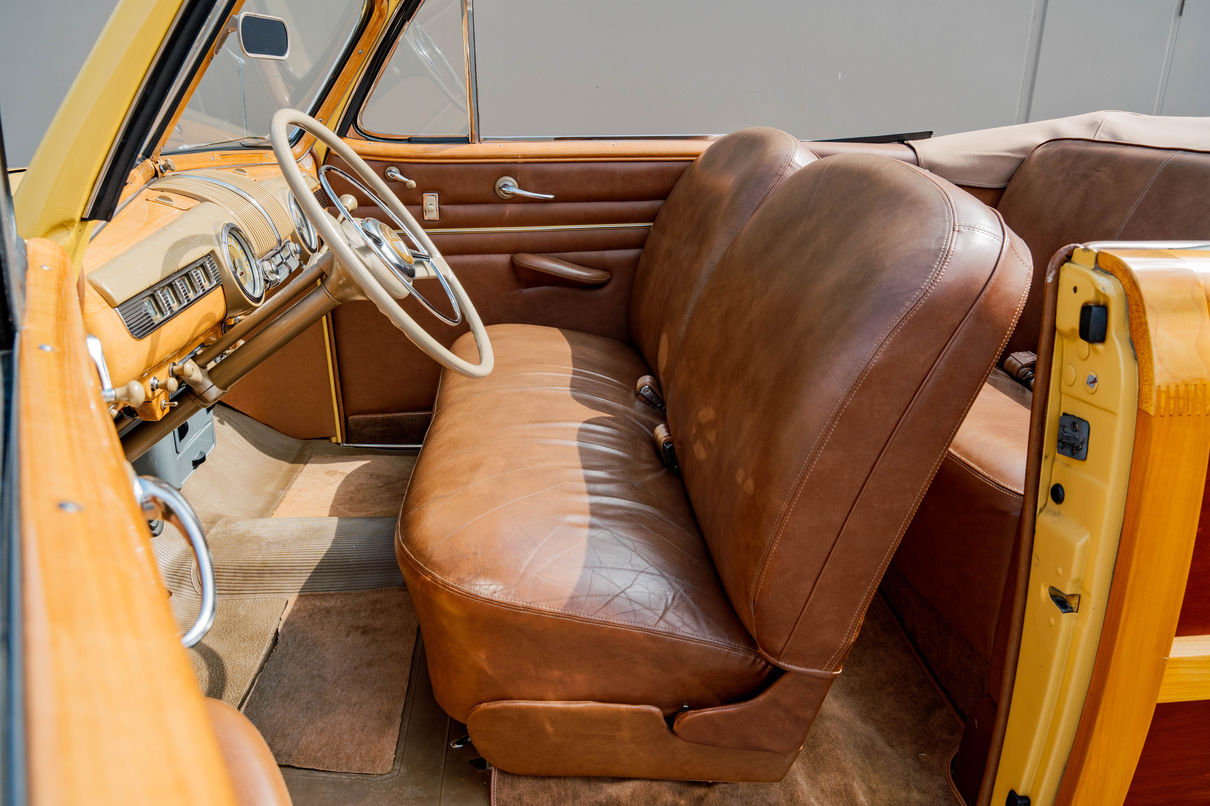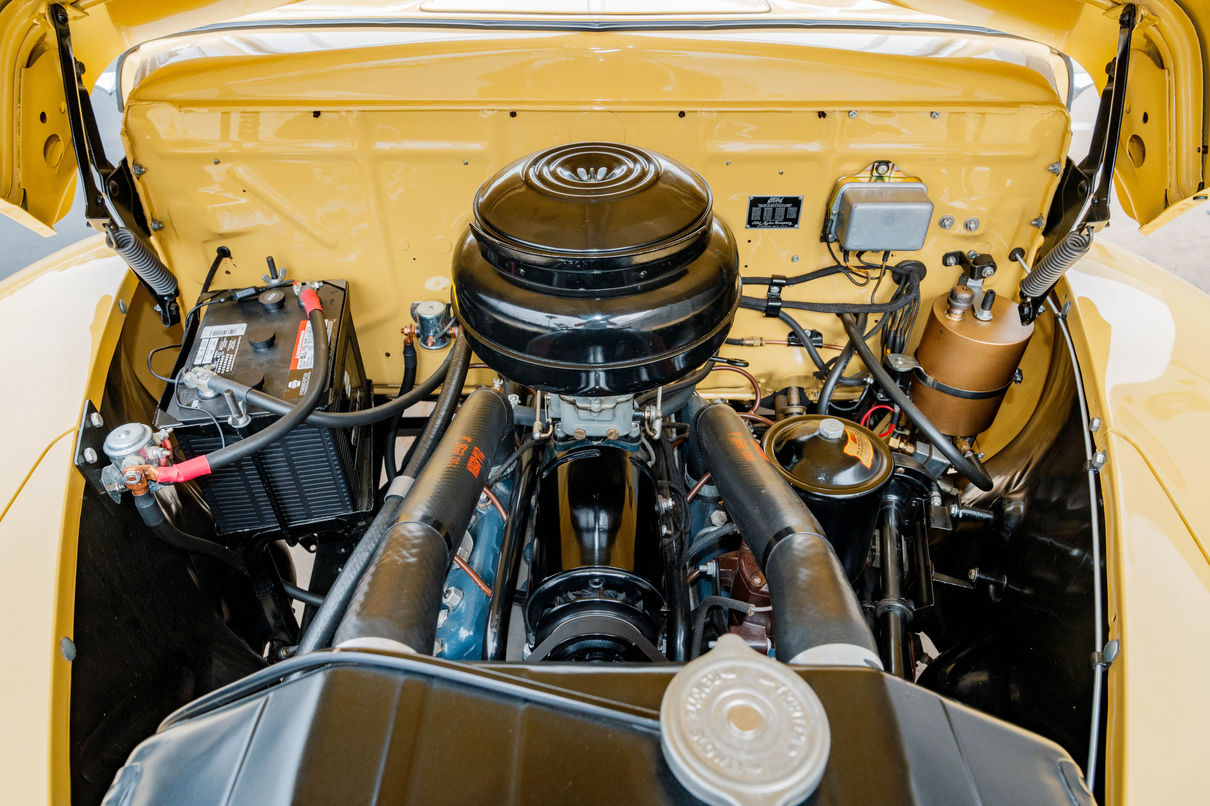Scroll down for description and more information
Click the main photo to enlarge
1947 Ford Sportsman “Woodie” Convertible
1947 Ford Sportsman “Woodie” Convertible
Engine - 239 cubic-inch Flathead V8
Transmission - 3-speed manual
Horsepower - 100 at 3600 rpm
Production - 2,774 for 1947
“For ‘47 Ford’s Out Front”
With World War II having come to an end, there was significant built-up demand for new automobiles. The Ford Motor Company, as with most other manufacturers, had dedicated the prior years to fulfilling military orders. In 1945, Henry Ford II requested a custom-made convertible with a wooden body, intended for his own personal use. Given the noticeable demand for Chrysler's “woodie” station wagon models already, the decision was made to greenlight the "Sportsman" model for series production. In order to accelerate the launch of this new model, Ford elected to provide a cosmetic update to their existing 1942 design. Labor strikes and shortages of materials stalled the large-scale production of the Sportsman, resulting in a delayed start in July of 1946.
Around 300 skilled workers and Ford’s Iron Mountain facility in Michigan were responsible for manufacturing the Ford Sportsman on an assembly line alongside regular station wagon models. In contrast to the Chrysler Town and Country, the Sportsman did not make use of wood as a structural component of the body. Production started with standard convertible bodies, from which the outer door panels, quarter panels, and trunk lids were removed. Following priming, maple wood framing and mahogany panels were fitted and treated with varnish. The finished bodies were subsequently sent back for the addition of remaining trim components before being shipped to Ford’s main assembly plants to be combined with the appropriate chassis.
This restored example, finished in Maize Yellow, represents one of the fewer than 100 known surviving Ford Sportsmans. As one of the rarest post-war Fords, this outstanding vehicle has been previously honored with the Dearbord Award, “for superior originality, restoration excellence, and drivability,” and exemplifies a landmark in the overall American automotive story.





















